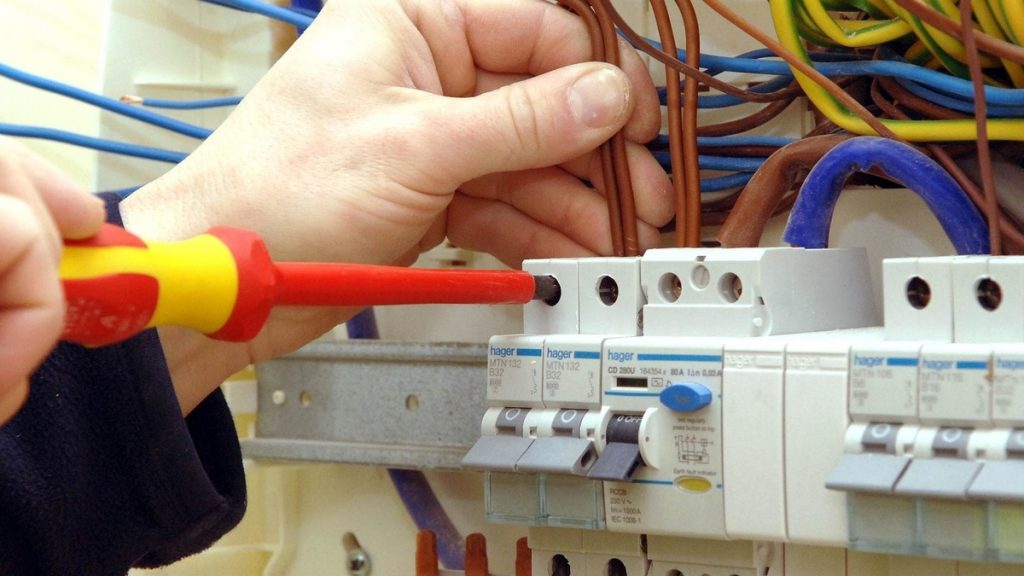What’s in your Fuse board?

Do you understand your wick board?
What is in your fuse board (or fuse box, electrical box, consumer unit, lecy thing)?
When it all gets dark, you may know that you need to blow the cobwebs off the fuse box and turn a switch back, but why so many different bits and bobs? Hopefully this article will help you understand a little more.
Goodship Electrical Milton Keynes, Electrical Service Company Milton Keynes, Expert Electrical Solutions Milton Keynes, Commercial Electrician Milton Keynes, Domestic Electricians Milton Keynes
But first a brief history of the modern wick board.
Houses were electrified in the early 1900s, but only after World War II was the electrical supply voltage standardized and fuse boards introduced. Due to a shortage of skilled labor, it was not until the late 1950s that the production of wick plates really started and we began to see them more often in our homes.
The first domestic fuse plates had fuses that you could replace or rewire, these types of cards still work in some homes throughout the country. But the modem fuse (‘consumer unit’) has technology that makes them so much safer and is designed to stop electrical shocks and fire.
The modern consumer unit (fuse board)
The main switch
The main switch is exactly that, the main switch. It controls the power supply from your electrical meter to the consumer.
This switch is the only one that can be turned on and off manually, unlike the rest of the switches in your consumer unit.
RCD
RCDs (RCDs) are used to protect life by preventing electric shocks and malfunctions that could cause a fire. It does this by immediately turning off (tripping) when it detects an imbalance in the force, suggesting that force flows through something that it should not be. You must test your earth leakage circuit breaker at least every 6 months by pressing the button.
MCB
MCBs (miniature circuit breakers) to which your electrical circuits are connected. MCBs switch off (trip) when they detect an overload, such as when you connect too many things to an extension cord, or an over current (short circuit) that can occur when you hammer a nail through a cable.
RCBO
An RCBO (earth leakage circuit breaker with over current protection) is a device that does the same work as both RCD and MCB in one, preventing electric shocks, earth faults, overload and over current. RCBOs are used on important circuits and where overload shutdown can affect an RCD. You must test your RCBO at least every 6 months by pressing the button.
SPD
From January 2019, electricians must perform a risk assessment when installing a new consumer unit to determine if you need an SPD (surge protector) in your electrical system.
An SPD protects your entire electrical system and all electronic equipment connected to it against damage caused by lightning or other electric shocks coming from outside your home.
The future of the consumer unit
The technology used in modern consumer units continues to evolve at a pace, and the next generation of consumer units is already available. These new generations of consumer units have SPD protection as mentioned above, but also have AFDDs.
AFDD / RCBO
AFDD / RCBO include an AFDD and an RCBO. The RCBO protects against electrical shock, earth faults, overload and over current and the AFDD (Arc Fault Detection Device) prevents unintended electrical sparks in a cable or connection. This type of spark is often caused by damage to cables or poor electrical connections, which can lead to fire.
Electrical Maintenance Service Company, Electrician Milton Keynes, Electrician Leighton Buzzard Milton Keynes, Electrical Solutions Ltd Milton Keynes, Electrical Maintenance Service Company Milton Keynes
The costs and size of AFDD / RCBO devices currently limit their ability to be installed every day. The 18th edition of the electrical regulations, which came out in January 2019, only recommends its use instead of having it as a mandatory requirement, which means that unless a customer specifically requests it, it is unlikely that an electrician will install it.






